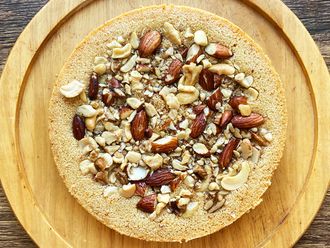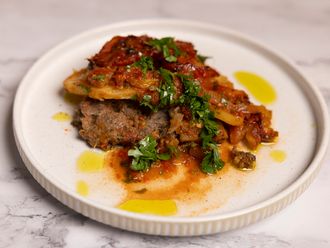
When, in 1827, French inventor Nicéphore Niépce photographed a table set with a bowl, a wine bottle and a hunk of bread, he could not have imagined the precedent he was setting. In taking the world’s first still-life picture of food, Niépce was foreshadowing one of this century’s most curious phenomena.
In October alone, one in five UK adults has posted a picture of his or her food on social media, or sent a shot to a friend, according to recent research. (This rises to a third among 18- to 24-year-olds.) The research finds that almost half of Britons make more effort when preparing food for guests or social media-minded members of family if they think a photo of it may appear online. They are becoming, to adapt Napoleon’s phrase, a nation of shot-reapers — and it’s changing the way people eat and entertain at home. The findings are contained in Waitrose’s annual report on Britain’s eating habits, which I authored.
Writing the report, I was struck by how unashamed people are about taking snaps of their food. It is simply something they do. It seemed extraordinary until I scrolled through my own social media feeds: snaps of a mean merluza en salsa verde my sister-in-law cooked in Spain; a miso-flavoured porridge I tried; and — hilarious, this — a roast chicken I had prepared that looked like William Hague.
The food industry is taking note. Sales of patterned bowls at Waitrose have risen by 12 per cent as people look for more Instagram-friendly ways to present their food at home. In October, the Italian restaurant chain Zizzi teamed up with Leanne Lim-Walker, a popular Instagrammer, to train its staff “to help diners capture the perfect foodie snap”.
According to industry insiders, some restaurants are now deliberately including one eminently Facebook-able dish on their menus — a trend not universally welcomed. At the same time, certain restaurants in the US and France have banned customers from taking pictures of their dishes, or “foodstagramming”, as it has become known. Patrons at Heston Blumenthal’s Mandarin Oriental restaurant Dinner have been asked to refrain from using flashes when snapping their food.
So what’s the most foodstagrammed meal? On the basis of its global hashtag popularity, it’s pizza, followed by sushi and chicken. When tastes are broken down on a city-by-city basis, London comes out as the most popular place for foodstagramming burgers, accounting for five per cent of posts worldwide. One in 10 of all curry photos is taken in Tokyo (with London in third place behind Osaka). New York is top for empanadas, chicken, pizza, sushi and bao buns, while almost nine per cent of burrito photos are taken in Los Angeles.
To delve deeper, tap #food into Instagram and there are 192 million pictures to work your way through. The Waitrose research also revealed some fascinating regional variations across the UK. People from Sheffield are twice as likely to have shared a food picture on social media than people from Oxford, while people in the East Midlands are snap-happiest.
Whatever the geographic quirks, the trend looks here to stay. But why do we feel compelled to take photographs of our food in the first place? There’s a “coarse logic” explanation, which can be described as the Everest principle: we take pictures of our food because we can. At least twice a day, we sit with a plateful of food and, more often than not, a smartphone, with its powerful camera and dozens of fancy filters. The impulse to record the everydayness of one’s meal is perhaps no different to that which compelled Monsieur Niépce some 190 years ago.
Today, though, there’s an extra ingredient: the so-called humblebrag. When someone posts and tags a picture of their dish at The Ivy, are they really showing us the steak in front of them, or are they signposting that they’re at dining in one of London’s most exclusive eateries? The answer seems depressingly obvious.
However, this new study makes clear, the main element in our obsession with sharing is that we are proud foodies. Four in 10 of the 2,000 respondents said they take greater care over the presentation of their food than they did five years ago. Asked why, the majority said that good presentation makes them feel better and enjoy the food more. And sharing pictures with others is a corollary of this. The logic goes: cook a nice dish, feel good about yourself, share it with others on social media, watch the ‘likes’ flood in and feel even better.
You can argue about what this says about the times we live in, but equally you could argue that by posting images on social media people are creating an uplifting virtual sharing economy. This isn’t confined to Britain. In an academic study in the “US Journal of Personality and Social Psychology” earlier this year, researchers divided diners at a Philadelphia farmers’ market into two groups, asking one group to take photographs as they ate and the other to eat as they would normally. Surveyed afterwards, diners who took pictures were found to have enjoyed the meal significantly more, and felt far more immersed in the experience, than those who did not.
Therefore, we should celebrate this curious foodstagramming craze. Anything that makes this unsavoury world taste a little better should be embraced. Just take the shot before your food gets cold.
–The Telegraph Group Limited, London 2016

















